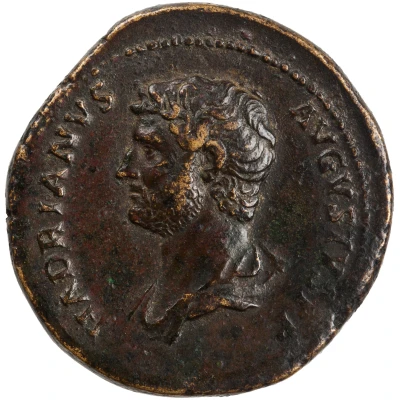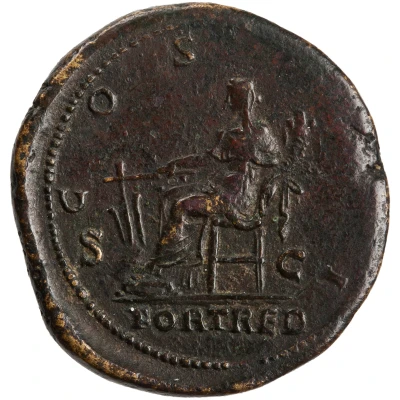


© American Numismatic Society (ANS)
Dupondius - Hadrian COS III S C; Fortuna
| Orichalcum | 12.5 g | 27 mm |
| Issuer | Rome › Roman Empire (27 BC - 395 AD) |
|---|---|
| Emperor | Hadrian (Publius Aelius Hadrianus) (117-138) |
| Type | Standard circulation coin |
| Years | 128-129 |
| Value | 1 Dupondius = ⅛ Denarius |
| Currency | Denarius, Reform of Augustus (27 BC – AD 215) |
| Composition | Orichalcum |
| Weight | 12.5 g |
| Diameter | 27 mm |
| Shape | Round (irregular) |
| Technique | Hammered |
| Demonetized | Yes |
| Updated | 2024-10-06 |
| Numista | N#255491 |
|---|---|
| Rarity index | 100% |
Reverse
Fortuna seated left, holding rudder and cornucopia.
Script: Latin
Lettering:
COS III
S C
Translation:
Consul Tertium. Senatus Consultum.
Consul for the third time. Decree of the senate.
Comment
Source: Online Coins of the Roman Empire (OCRE)Interesting fact
The Dupondius coin featuring Emperor Hadrian (COS III S C; Fortuna) from the Roman Empire (27 BC - 395 AD) is interesting because it was made of Orichalcum, a metal that was highly valued in ancient times for its durability and resistance to corrosion. Orichalcum was a bronze-like alloy that consisted of copper, zinc, and sometimes small amounts of other metals like iron or nickel. It was used in the production of coins, weapons, and other objects that required strength and durability. The fact that this coin was made of Orichalcum speaks to the advanced metallurgical skills of the ancient Romans and their ability to create high-quality materials for their currency.